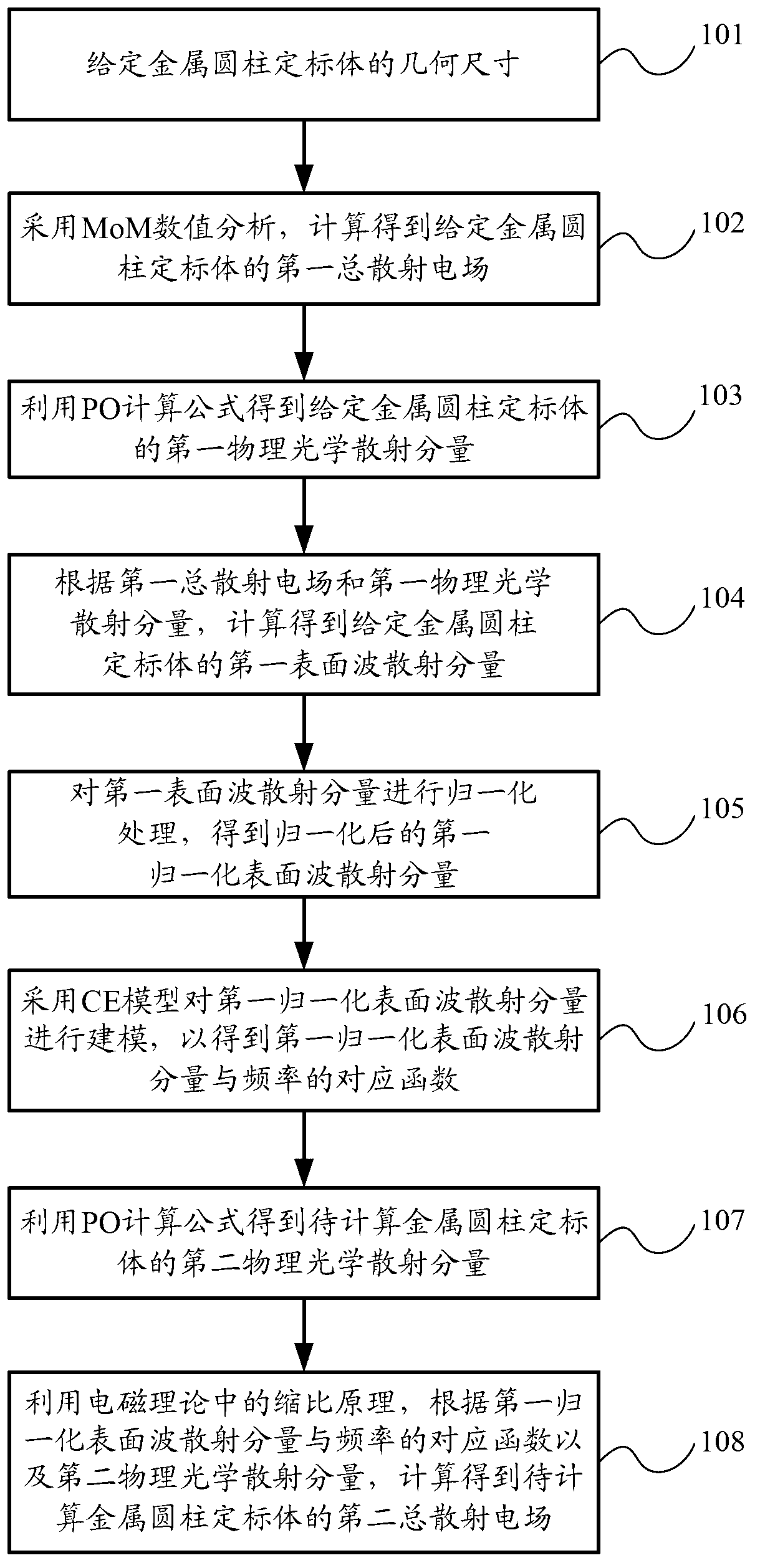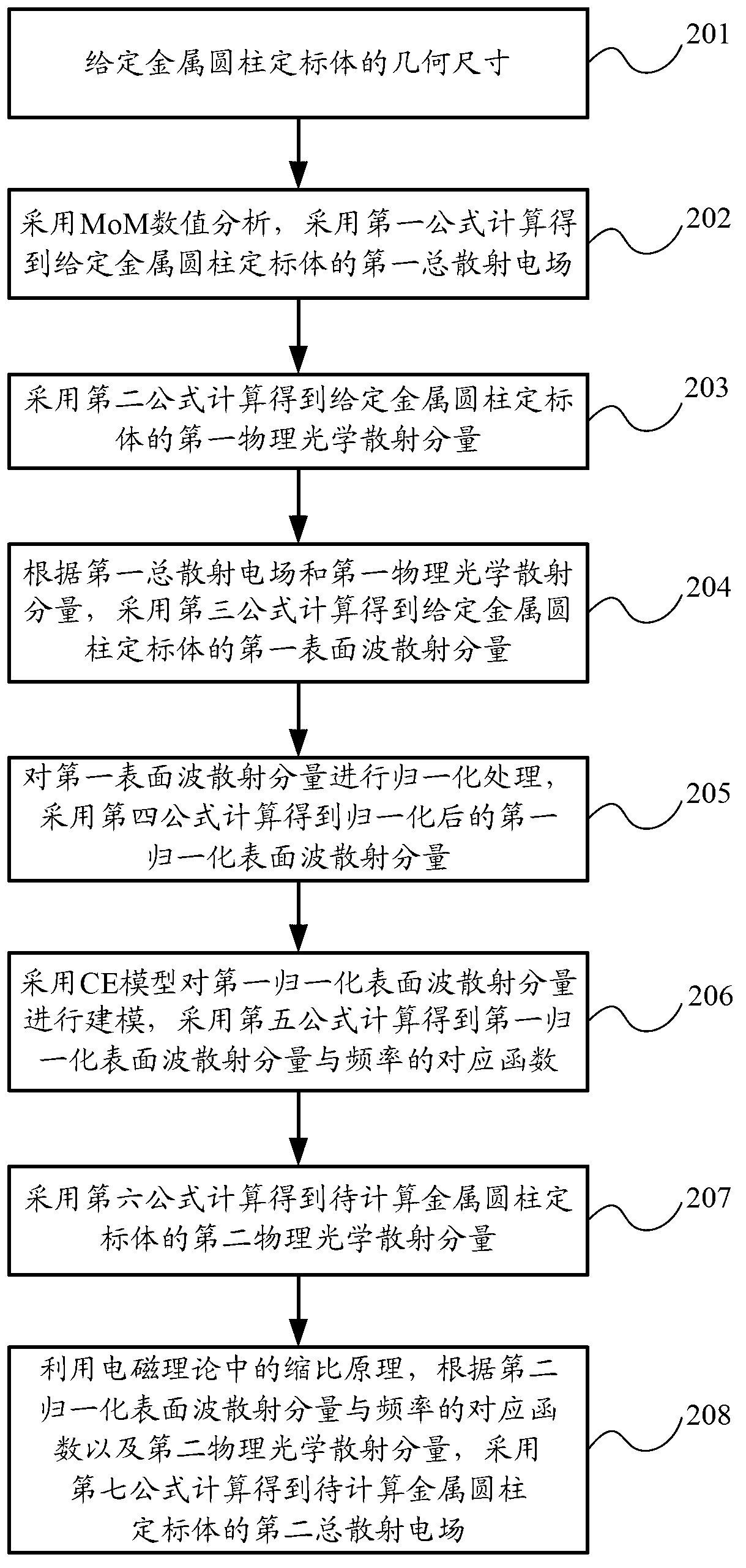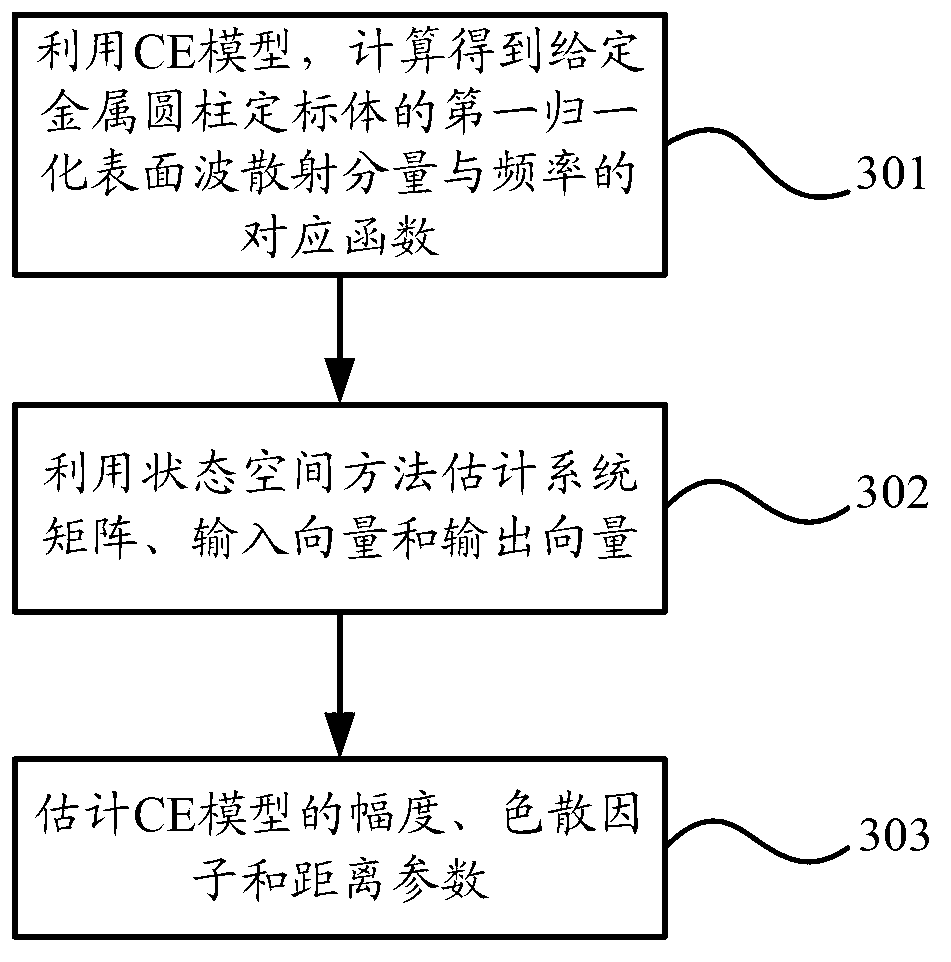Method for calculating radar scattering cross section of metal cylindrical calibration body
A radar cross-section and metal cylinder technology, applied in radio wave measurement systems, instruments, etc., can solve problems such as limitations of existing technologies
- Summary
- Abstract
- Description
- Claims
- Application Information
AI Technical Summary
Problems solved by technology
Method used
Image
Examples
Embodiment Construction
[0043] figure 1 It is a flow chart of an embodiment of a method for calculating the radar cross section of a metal cylinder calibration body of the present invention, as figure 1 As shown, the calculation method of the radar cross section of the metal cylinder calibration body in this embodiment may include:
[0044] Step 101, specify the geometric dimensions of the metal cylinder calibration body (namely the first cylinder).
[0045] Specifically, given the height h and radius a of the metal cylinder calibration body, the ratio of the height to the diameter of the given metal cylinder calibration body can be calculated, namely In the formula, h represents the height of the given metal cylinder calibration body, and a represents the radius of the given metal cylinder calibration body.
[0046] Step 102, using MoM numerical analysis to calculate and obtain the first total scattered electric field of a given metal cylinder calibration body.
[0047] MoM numerical analysis re...
PUM
 Login to View More
Login to View More Abstract
Description
Claims
Application Information
 Login to View More
Login to View More - R&D
- Intellectual Property
- Life Sciences
- Materials
- Tech Scout
- Unparalleled Data Quality
- Higher Quality Content
- 60% Fewer Hallucinations
Browse by: Latest US Patents, China's latest patents, Technical Efficacy Thesaurus, Application Domain, Technology Topic, Popular Technical Reports.
© 2025 PatSnap. All rights reserved.Legal|Privacy policy|Modern Slavery Act Transparency Statement|Sitemap|About US| Contact US: help@patsnap.com



